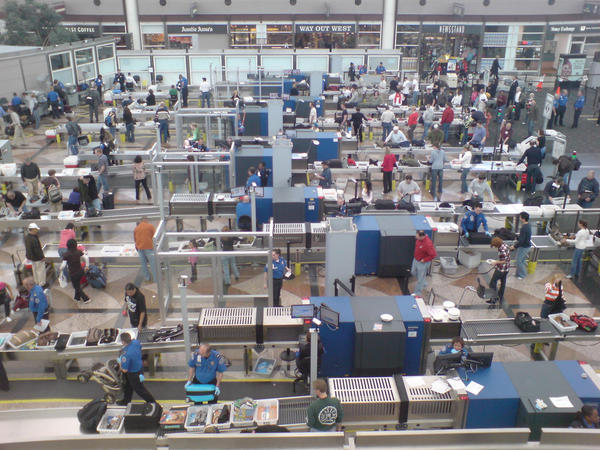
If you had traveled by air any time in the last decade, you’ve probably waited in a long line to get through airport security. Waiting for dozens of travelers to remove their shoes and place their quart-sized bags of liquids into the bins can add anywhere from a few minutes to almost an hour to your travel time, and if you’re running late, a whole new level of anxiety to your day.
However, the long security lines could be a thing of the past for you, if you’re willing to undergo some extra scrutiny by the TSA. The government agency is expanding its PreCheck program, which until recently was only available to a select group of travelers, to the general public.
About Pre-Check
Imagine traveling hundreds of thousands of miles by plane every year and having to remove your shoes, open your laptop and offer your liquids for screening every single time you went through an airport, which might be several times in the same day. Understanding that some frequent travelers don’t present a security risk and that having them repeat typical screening procedures was both inconvenient and a poor use of resources, the TSA created the voluntary PreCheck program to allow certain passengers undergo risk assessments before they arrived at the airport.
After undergoing the risk assessment, travelers using certain airports (currently, only 40 U.S. airports participate in the program) can go through special expedited security lines and move on to their gate. Their eligibility for the expedited screening is embedded on a barcode on the boarding pass, which shows up when the pass is scanned at the first security checkpoint; the security officer then directs the passenger to the appropriate line.
Open to the Public – Sort Of
Previously, the only people allowed to sign up for the PreCheck program were members of certain airline loyalty programs and those who belonged to Customs and Border Protection Trusted Traveler programs, such as NEXUS. Given the success of the PreCheck program with test volunteers, the TSA has now opened up the program to all travelers who want to apply. However, the process is not as simple as filling out an application and mailing in the $85 fee.
To apply, you must go to the TSA.gov PreCheck website to fill out and submit the online application and the fee. Once your application is accepted, you’ll be directed to an enrollment center to verify your identity and provide fingerprints. Currently, the only enrollment centers are located at Washington Dulles International Airport in Virginia and Indianapolis International Airport in Indiana, but the TSA expects additional enrollment locations to open in fall 2013.
Once you’ve proven your identity, the TSA will conduct a thorough pre-screening process to determine whether you qualify for the program. The agency does not provide specifics about the process, but experts assume that it includes a thorough background check.
Using Your PreCheck Status
If your PreCheck application is approved, you will receive a Known Traveler Number (KTN) from the TSA. When you go to book your cheap flight to the Florida Keys for winter vacation or your dream trip to Europe, you’ll find a place to enter your number into your traveler profile. This number is then associated with your reservation, and you’ll receive the special boarding pass when you check in for the flight.
It’s important to note that getting a KTN does not guarantee that you’ll qualify for the expedited security lines at the airport. The TSA notes that it uses a number of random screening measures in each airport, and there may be times that even pre-screened passengers may be required to go through the standard security lines.
However, if you travel often and want to reduce the amount of time you stand in line only to prove that your toothpaste is in fact toothpaste, opting into the PreCheck program is a good start. If PreCheck won’t work for you, pay close attention to the security rules and do everything you can to reduce the time you spend in security, including knowing the rules about what you can and can’t bring on board (remember 3-1-1) and wearing shoes that easily slip on and off. There’s little chance that airport security procedures will be loosened any time in the near future, so do what you can to make the process a little less painful.
Denver Airport TSA Photo credit: Inha Leex Hale / Foter / CC BY
About the Author: As a travel writer, Jill Connelly racks up almost a half-million air miles each year. She is a pro at getting through security, and never flies in lace-up shoes.
